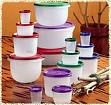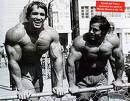Beginner Body Transformation Tips
 Welcome to part 2 of my interview with New Jersey transformation expert, John Alvino. In part 1 of this interview series, John revealed some very insightful body transformation secrets to help anyone reshape their body quickly, and today he continues to deliver incredibly useful fat loss tips, especially for beginners.
Welcome to part 2 of my interview with New Jersey transformation expert, John Alvino. In part 1 of this interview series, John revealed some very insightful body transformation secrets to help anyone reshape their body quickly, and today he continues to deliver incredibly useful fat loss tips, especially for beginners.
*************
Craig Ballantyne: Okay, now I’m going to ask you the most difficult question to answer of all time! What percentage of fat loss is diet and what percentage is exercise?
John Alvino: Ah..that question again!
I remember reading about this debate in a magazine that was published back in the sixties. So this is an old one. I have seen many different scenarios with all the people I’ve worked with. This is how I come up with my conclusion.
Some people I have trained have been able to diet very, very strictly, but they’ve hated to train hard. Others would train their asses off, but they hated to diet strictly, so they definitely deviated a bit too often.
The people who did better in the long run were the people who were able to diet strictly and train pretty good. 
Don’t get me wrong, they still train, but not as intensely as I would have liked them to. But they still did better than the people who trained very intensely, but were not strict enough on their diets.
So for fat loss there’s a bit more emphasis on your DIET.
The percentage is really difficult to say. If you want to nail me down to a number I will take a guess at it, but it’s difficult to say because everybody is different to some degree. The idea that 80% of your results come from nutrition has been thrown out quite a bit. From a body weight standpoint, that’s probably true, but when we factor in lean muscle and fat loss I think that number is going to have to come down a bit, and probably come closer to maybe 65% or 70%.
Diet does get the emphasis. If you’re eating Big Mac’s, even if you’re working out a lot, there is no way that you’re going to get that lean physique you desire.
Craig Ballantyne: Great stuff, John. Okay, let’s go through some processes, especially for BEGINNERS now. If somebody wants to start a TRANSFORMATION, you know, whether it’s this woman that comes in or whether it’s a guy who weighs 300 pounds, what do you tell them to do first in terms of GETTING PREPARED?
What foods do they need to buy, what foods they need to throw out?
If they’re not coming to you for workout info, where should they go?
If they’re going to a gym, like let’s say you’re talking to somebody over the holidays and they can’t come to you because they live 100 miles away, what do you tell them to look for in work out equipment or a gym membership, etc. ?
John Alvino: Well, first of all, before someone starts a plan like this, I give them a brief overview of what they’re going to have to do.
I like to make sure that psychologically, they are ready to make this commitment to themselves.
So once we get that out of the way then we start talking about things that are pretty obvious to some, but if you’ve never gone through this before, you might not know.
I also like to have them WRITE DOWN EVERYTHING they’re eating. Then we add up the calories, and we also see how many gr ams of fat, protein, and carbs they’re eating. A lot of times if people just pick all day, like a lot of people do in our society now, they don’t even know how much they’re eating. A lot of this is psychological for them and a lot of this helps me design a plan because I can see where their metabolism is at.
ams of fat, protein, and carbs they’re eating. A lot of times if people just pick all day, like a lot of people do in our society now, they don’t even know how much they’re eating. A lot of this is psychological for them and a lot of this helps me design a plan because I can see where their metabolism is at.
So for this purpose, a three day dietary log is sufficient. We take a look at that and then we design a plan. If you don’t see what the client was eating prior, sometimes you can make too drastic a change in their diets. For example, let’s say I wanted someone to eat 1500 calories per day. If after looking at her dietary log, she was only eating 800 calories, I would not want to increase her calories by that much initially. If I did this, it would result in weight gain and she would probably FREAK OUT and quit before she even got started.
The next thing that they have to do is to get all the JUNK FOOD out of the house. If it’s not on your plan, don’t keep it in the house!
This way, you won’t be tempted to cheat on your diet during a moment of weakness.
And if you are allowed a cheat meal it can be scheduled with no leftovers. For example, if you’re going to a dinner on Saturday night, you can be looking forward to it, knowing that you’re going to cheat, but when you come back home it’s over.
When the junk food is in the house, I find that sometimes a cheat meal can turn into a binge weekend, because your will has been broken and you kind of feel that you messed up anyway. People often think, “I’ll just finish the weekend cheating and I’ll get strict on Monday.” Man, if I had a dollar for every time that I heard that logic, I’d be rich! Now you have three days of cheating under your belt, so to speak! And you end up gaining two or three pounds of fat in some cases. It’s no good. So, get the junk food out, period.
The next question is do they have enough supplies in their kitchen to prepare their food?
Little things like a blender and Tupperware containers to put their meals in. You can make things real easy and simple. You might also want to have sauce pans and pots and spatulas, just basic stuff that you should have in the house to make preparing your food easy.
Also, when someone is initially starting a plan along these lines and it’s something completely new to them, you have to address the training environment. So, will they be training at home or will they be going to a public gym? It is really individual, but a gym is certainly going to give you more flexibility in regards to equipment.
I also prefer a gym because I find that once you go there, you know you’re going to be there for one hour, you’re going to train, and you’re going to get out. If you train at home there’s a greater chance of distraction…phones ringing, children running around, or what have you. But again, training at home is obviously more convenient so it’s a trade off. It’s really up to the individual.
If you train at home initially, at the very least you should have a stability ball, a medicine ball, get some adjustable dumbbells and an adjustable bench. So you can get a lot of life out of that relatively inexpensive and space efficient home gym.
If you’re going to go to a public gym, you don’t need anything fancy. I prefer basic equipment. I think if you go to a lot of these fancier places now, you end up paying twice the membership just because they have a towel service and they have imported tile from Italy in the locker rooms. I don’t care about that. Most people who train hard don’t care about that either.
What you want is just a GOOD ATMOSPHERE.
A place that plays motivating music. A place that has some positive energy. That makes a huge difference in your ability to train intensely and to get focused. So you want to check out a couple of gyms locally. And consider joining one that makes you feel comfortable and fired up to work out.
I feel that if you’re doing a fitness program that you don’t enjoy doing you’re not going to stick with it. I see that again and again where someone will come and say I want to start this plan immediately and they go 100 miles an hour into the plan and then after a couple of weeks they say, “This is too difficult, I can’t do this”.
I like to design a fitness plan that is effective and enjoyable at the same time. To do this you have to know the client reasonably well.
Craig Ballantyne: That’s some pretty good stuff.
John Alvino: Some of this advice may sound obvious. Like for me and you, we’ve been doing this a long time. But the little things really aren’t obvious to people who haven’t done them before. Even things like getting a few extra spices in the house can really help. We can’t invent new protein sources for our clients. We’re going to have chicken breasts, egg whites, and other basic protein sources. There’s not a ton of variety there. But you can season them in a way where you never get tired of eating them. That’s one KEY to staying on a plan of healthy eating.
things really aren’t obvious to people who haven’t done them before. Even things like getting a few extra spices in the house can really help. We can’t invent new protein sources for our clients. We’re going to have chicken breasts, egg whites, and other basic protein sources. There’s not a ton of variety there. But you can season them in a way where you never get tired of eating them. That’s one KEY to staying on a plan of healthy eating.
I do give people some basic recipes to start. I also encourage them to COOK IN BULK.
Let’s say they’re going to make grilled fish. Instead of making one meal of grilled fish and having to cook again in three hours, make enough for three days, and keep it in the fridge. I teach them how to prepare their food.
If you have food prepared you’re much more likely to stay on the plan. If the food is not prepared and you’re out, like at work for example, someone from your office is going to be running to the pizzeria, and you’re probably going to break down, especially if you’re hungry.
So beyond teaching the client the actual diet and training routine, it’s the little stuff that becomes so important for the clients to have success. These are little points I give people initially because I find if I don’t discuss them, I will be discussing them in the future, but after they already messed up. I just try to eliminate those first few screw-up’s from the get-go.
Craig Ballantyne: I think you brought up a really good point there that even advanced people can benefit from – and you’re talking about the atmosphere of the gym, the energy of the gym and the program that they’re using. And so if people are finding right now that they’re kind of at a still point in their training, they’re at a plateau and they don’t look forward to the gym, maybe it is time to investigate a new gym in the area.
Maybe working at home has you in a rut. Maybe it’s time to go back to the gym for three months and get fired up for training again.
John Alvino: I couldn’t agree more. Even if you can’t find another gym, you can get a friend of yours to train with you.  Sometimes just having a training partner can give you the motivation that you were lacking. I’ve been training for a long time and I’m just about as driven as anybody. Yet I still train much better if I’m training with a friend and we create a fun and competitive environment.
Sometimes just having a training partner can give you the motivation that you were lacking. I’ve been training for a long time and I’m just about as driven as anybody. Yet I still train much better if I’m training with a friend and we create a fun and competitive environment.
A training partner also keeps you more committed, too, because you’re accountable to someone. If your partner is going to meet you at 10:00, then you’re going to be there at 10:00 and not get distracted. Without this commitment, it is very easy to say, “I will train tonight or I’ll go tomorrow morning”. A lot of times it is easier to put things off if you don’t have a committed schedule with another person.
Even hiring a trainer for a couple of sessions can give you that little push you need. But the bottom line is, once you reach that point of burn out it’s time for a change, and you’d better do it quick, before it gets to a point where you just take a long layoff only to come back three months later, with greatly diminished results.
If you’re worried that you may not be able to follow John’s nutritional advice to perfection, then you’ll want to check out part 3 and what John had to say about cheat meals and fat loss.